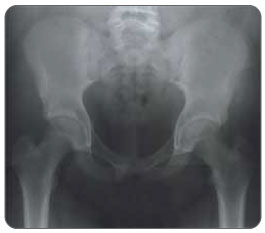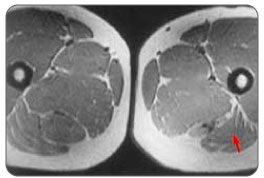|
| Diagnosing a Pulled HamstringTo help your doctor achieve a proper diagnosis, he/she will begin with a medical history about you, your current condition and symptoms. He/she will inquire about the intensity of your present pain, if you heard a popping noise when you first experienced your injury, the duration and type of symptoms and the limitations you are experiencing. Details about what instigated your problem, when it started, and whether or not you have ever had treatments for this or a similar condition in the past, will be very helpful in assessing your injury.  A physical examination will be performed to determine if you have any signs of a pulled hamstring. Your doctor will visually assess and feel the muscles, bones and other soft tissue in and around your hamstring, as well as your entire leg, pelvis and lower back, to evaluate sameness (symmetry), recognize differences and identify pain and tenderness. This will help to discover any abnormalities, such as mild or severe inflammation, fluid, bruising, bone or tissue deformity, and leg length discrepancies. He/she may ask you to complete a series of flexing and extending leg movements to see what motions cause pain, weakness, tightness, or instability. This will help to determine the location of your injury (in the muscle belly or near the attachment), test for the grade of your hamstring strain and any muscle imbalances. He/she will also evaluate your feet and gait (the way you walk) to determine if you overpronate, or have other alignment issues. Most Common Hamstring Injury Diagnostic TestsMost grade 1 or 2 hamstring strains don't require diagnostic testing, however these tests will help confirm if you have a grade 3 strain and/or will rule out other causes of hamstring pain.  X-rays will provide a two-dimensional image of the overall structure of your hamstring and upper leg (pelvis, femur and knee). They are helpful in identifying instability, avulsion fractures, abnormal bone shapes (bone spurs, calcifications or cysts, joint degeneration), and/or other leg problems. CT scans (computed tomography) and diagnostic ultrasounds may be used to look internally at the hamstring muscles.  MRIs (magnetic resonance imaging) will provide more detailed information and will help to evaluate the soft tissues in and around your hamstring (muscles, tendons, ligaments, fascia, and other connective tissues). They can identify ligament or tendon damage, and can help to determine the extent of your injury, the grade of your tear or inflammation, as well as other associated conditions. Pulled Hamstring TreatmentsPulled hamstrings are frustrating to live with and healing can take a long time because it's difficult to give your leg the rest it needs. This is especially true for runners and other athletes that return to their sport too early. Re-injury is common but it prolongs recovery and may also lead to permanent damage and other conditions. Treating your hamstring strain correctly is essential to getting rid of your pain and restoring function to your upper thigh. Proper treatment will get you back to regular activities sooner, stop your pain, and reduce the risk of future re-injury. To learn how to treat a hamstring pull, go here to our treatments page.Product specialists are available 9:00 am to 5:00 pm Eastern Standard Time Monday to Friday. If any question or concern arises, call us or simply send us an email at any time (we check our emails constantly all throughout the day and night.. even on holidays!). We will respond as soon as possible. North America Toll Free 1-866-237-9608 |
    |